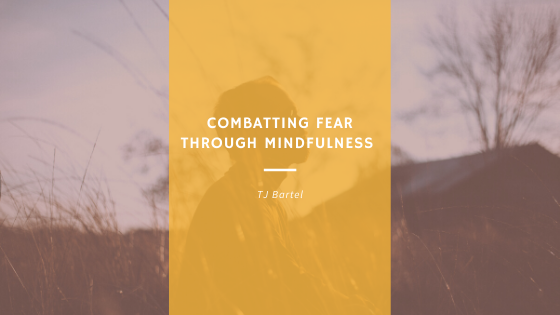There are two major vibrations in our world, there is fear and there is love. They are both powerfully magnetic. We are constantly being pulled towards one or the other. Feelings often present themselves without a known reason. Fear and love are both energetic, biochemical and emotional states created by thoughts, often unconscious thoughts also known as neuro-associative conditioning (NAC). To learn more about NAC see the note at the end of this blog.
Fear is just as common an emotion as love. However, fear isn’t quite looked at with the same welcoming sentiment. In fact, fear is often felt without consciously acknowledging it. This could be due to the fact that fear resonates on a more subconscious level. Most people spend 95-99% of their time in their subconscious mind. More than 80% of that time is spent on fear-based emotions like regrets from the past or worry about the future.
Most people share the common unconscious fears of somehow not being enough and not being lovable. Some popular fears that people experience include a fear of public speaking, or phobias such as flying or heights. Unfortunately, the reason for the fear may not register until one has a realization. Such a shift can be brought on by mindfulness training, energetic realignment or regression therapy.
For example, an adult may have anxiety when they are around dogs. They might assume that this fear is normal and probably due to some kind of looming threat. However, through regression therapy, they may remember a faint childhood memory of being bitten by a dog. People’s subconscious mind stores and categorizes these experiences as either favorable or unfavorable. However, consciously, they might remain unaware of these associations. Luckily fears can be combated through the practice of mindfulness.
What is Mindfulness?
Mindfulness is a psychological process that is centered around establishing awareness over a person’s present moment while remaining objective. Oftentimes, people fear things that could potentially happen in the future or subconsciously fear something that has occurred in their past. With mindfulness, this allows one to focus solely on the present, alleviating a lot of worries.
Mindfulness Techniques
Mindfulness techniques include consciously breathing, a self-compassion pause, and the five senses exercise. Another common mindfulness technique is mindfulness meditation. To mindfully meditate, a person should find a comfortable place to sit and close their eyes. While taking slow, deep breaths, one should focus their attention on their breathing specifically. If thoughts arise, it’s okay. Do not judge thoughts or engage in this invitation to think more. A person should observe the thought objectively and let it go by returning their attention back to their breathing.
Other Benefits of Mindfulness
Not only will mindfulness help you move past fear, it can create a more harmonious experience of life in many important ways:
- Lower symptoms of anxiety
- Lessen symptoms of depression
- Better blood pressure control
- More motivation
- Improve sleep
- Reduce chronic pain
- Relieve stress
- Alleviate gastrointestinal difficulties
- Treat heart disease
- Deeper and more meaningful interactions
- Better decision making
There’s nothing more powerful than walking through our fear and meeting it face-to-face. Once you have survived moving past it, you experience the sweet reward of exhilaration and empowerment. Building the muscles of courage and commitment to move forward in the face of fear is one of the best gifts you will ever give yourself. And the best part is, with each new victory, it gets easier. Check out my other writing on mindfulness for more.
More about conditioning:
Neuro-Associative Conditioning, also known as Classical Conditioning is most widely understood through the work of Iva Pavlov. You may have heard of “Pavlov’s dog,” and his experiment to condition the dog. Pavlov would give his dog a taste of meat powder and once the dog began salivating pavlov would ring a bell. After enough repetition the meat powder was no longer necessary. All Pavlov needed to do was ring the bell and the dog would salivate.
We are similarly conditioned day in and day out by our parents as young children, and now as adults that conditioning is often strengthened by our exposure to media. We are more apt to take in and absorb information that aligns with our conditioning, and more likely to reject new information that contradicts our conditioning. This is why mindfulness – the act of catching ourselves operating unconsciously out of our conditioning is so important.
